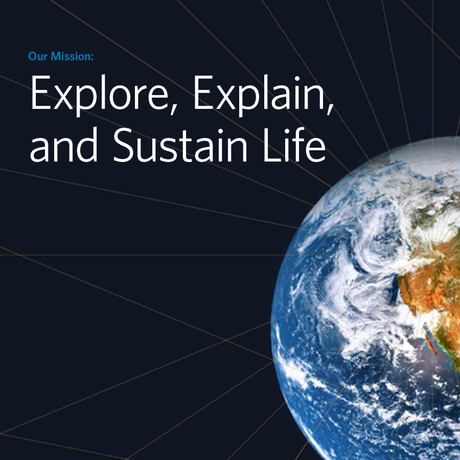Visit an aquarium, planetarium, rainforest, and natural history museum—all under one living roof.

0
Day in and day out, we strive to run the Academy facility as sustainably as possible (and in fact use 30 percent less energy than federal code requires). These efforts earned us our second LEED Platinum rating, which certifies that our operations and business practices meet the highest standards of sustainability based on a wide range of green practices and performance metrics.
Energy and Water
- The Academy uses 30 percent less energy than federal code requires
- Nearly 100 percent of the Academy's electricity comes from clean energy sources (the Hetch Hetchy hydroelectric plant, plus an on-site solar array)
- 70 percent of staff use alternative transportation (public transit, biking, walking) to commute to work, and are compensated for doing so. We provide bicycle parking at the front and back entrances, as well as an electric car recharging station at the loading dock
- Our data center was restructured to save 166,000 kWh of energy per year despite a 52 percent increase in computing capacity
- Our water use is 32 percent below the LEED baseline thanks to waterless urinals and low-flow faucets, toilets, and showerheads
0
Recycling and Waste Disposal
- 60–65 percent of the Academy's waste is diverted from landfills into recycling or compost, including waste from approximately 1.5 million visitors per year
- Electronic waste is handled by Corporate eWaste Solutions, a R2-certified electronics recycler and IT asset disposition company located in Hayward and Brea, California. They support their customers in building a brighter, greener future where electronics at the end of their useful life are disposed of responsibly and ethically.
0
Living Roof
- 87 percent of our roof's surface area is vegetated, reducing the urban "heat island" effect
- 100 percent of excess storm water from the roof drains into an underground chamber where it percolates back into the water table, preventing runoff from entering the city's storm water system
- Nearly 100 percent of the Living Roof's plants and 80 percent of the surrounding landscaping consist of native vegetation
0
Choice of Materials
- We incorporate sustainability into office-related purchasing decisions. All of our staff computers are Energy Star rated, and all of our printer paper is made of 100 percent post-consumer recycled content
- We use green-seal certified cleaning products and custodial paper products with recycled content
- We employ a prevention-based pest control program that is EcoWise certified and minimizes the use of pesticides
- Materials used for renovations and alterations (e.g. upgrades to exhibits) contain low or no amounts of VOCs (volatile organic compounds)
- We use low-emission and ozone-friendly substances for refrigeration, heating, ventilation, air conditioning, and fire suppression
0
Indoor Environment
- Outdoor views are available in 98 percent of regularly occupied spaces
- Staff can control lighting in 93 percent of the workspaces
- We use CO2 sensors, airflow monitoring, and demand-based ventilation systems
- The Academy has implemented an ongoing commissioning plan for continually optimizing the indoor environmental quality
0
Education
- Our Building Green exhibit highlights the building’s eco-friendly design features, including recycled building materials, radiant floor heating, and solar cells
- The Living Roof is used for weekly public programs, citizen science projects, and research studies by high school and university students
- The Education Division offers lesson plans and teacher workshops focusing on home energy, green buildings around the world, classroom energy audits, and the Living Roof
- The Academy's Teacher Institute on Science and Sustainability, a professional development program for Bay Area teachers, includes green building in its curriculum
0
Experience the wonder
It Pays to Visit Sustainably
Visitors save $3 on admission by walking, biking, or taking public transportation to the Academy!
Our Mission
Learn more about the Academy’s mission to regenerate the natural world through science, learning, and collaboration.


